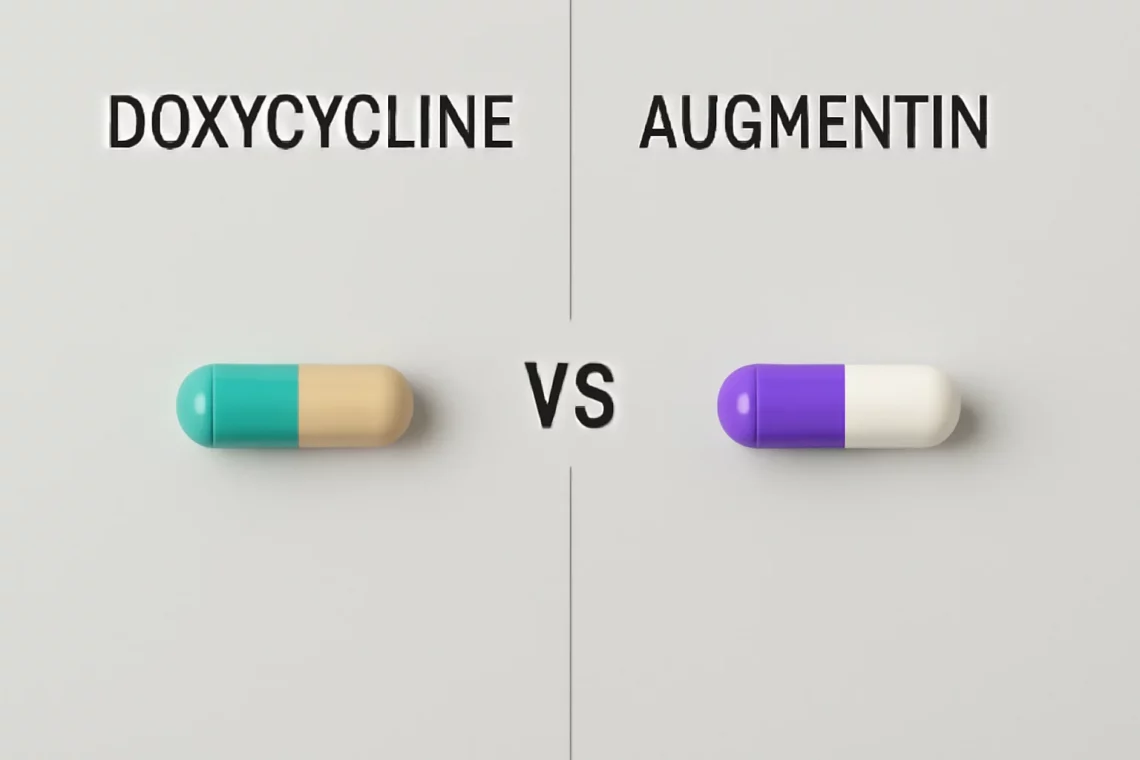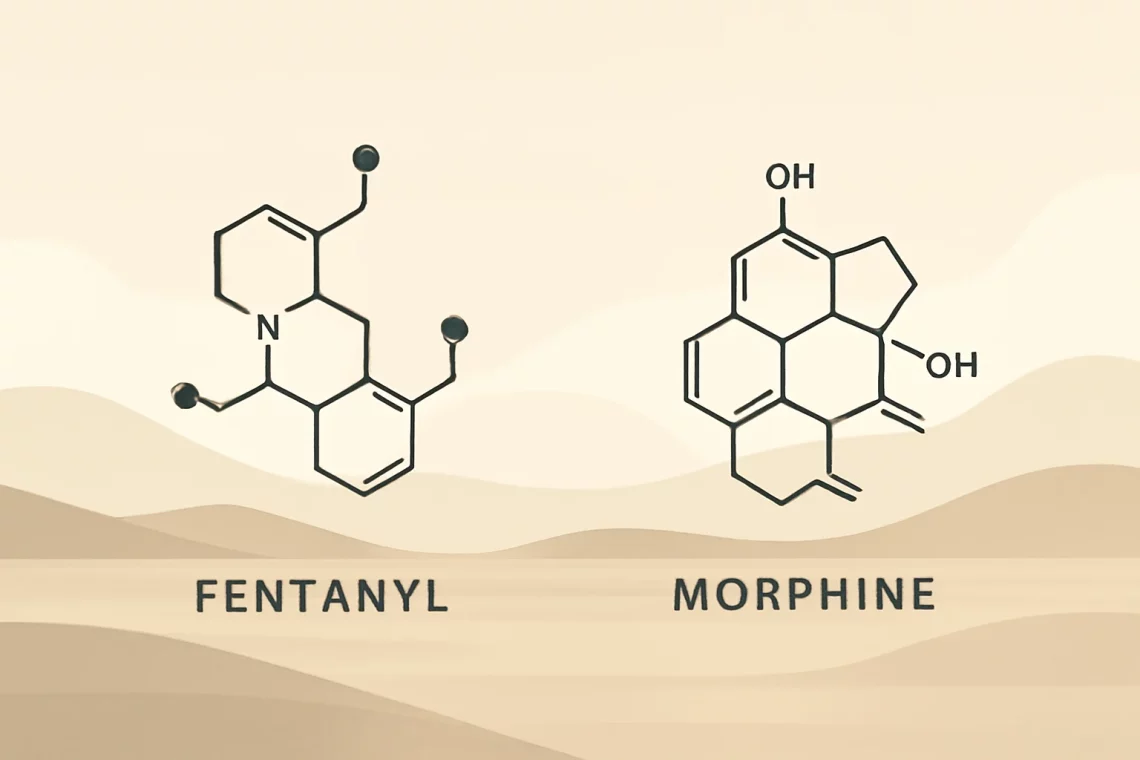Health
-
Doxycycline vs Augmentin: Which Antibiotic Is Right for You?
Doxycycline and Augmentin are two commonly prescribed antibiotics that serve different purposes in treating bacterial infections. Understanding the distinctions between these medications can be crucial for both patients and healthcare providers. Doxycycline, a tetracycline antibiotic, is known for its broad spectrum of activity against various bacteria, including those causing respiratory and skin infections. It works by inhibiting protein synthesis in bacteria, effectively stopping their growth. On the other hand, Augmentin is a combination of amoxicillin and clavulanic acid, which enhances amoxicillin’s efficacy against bacteria that produce beta-lactamase, an enzyme that often confers resistance to standard penicillin antibiotics. Both medications have unique mechanisms of action, indications, and side effects, making it…
-
Ibuprofen vs Motrin: Understanding Their Differences and Uses
Ibuprofen and Motrin are two widely recognized names in the realm of pain relief and anti-inflammatory medications. Both are often used to alleviate discomfort associated with various conditions, including headaches, muscle aches, arthritis, and even menstrual cramps. Their popularity stems from their effectiveness and the ease of accessibility in pharmacies and over-the-counter settings. Despite their common usage, many people may be unaware of the subtle distinctions between ibuprofen and Motrin. While they are often thought to be interchangeable, understanding their differences and similarities can be crucial for choosing the right medication for specific needs. The active ingredient in both ibuprofen and Motrin is the same, but the branding, formulations, and…
-
Xanax vs Hydroxyzine: Key Differences and Uses Explained
Xanax and hydroxyzine are two medications that are often prescribed for anxiety and related conditions. While both are effective in managing symptoms, they operate through different mechanisms and have distinct profiles. Xanax, which belongs to the benzodiazepine class of drugs, is commonly used for the short-term relief of anxiety and panic disorders. Its fast-acting nature and potential for dependence make it a medication that requires careful monitoring. On the other hand, hydroxyzine is an antihistamine that is often used as a sedative to treat anxiety and tension. Unlike Xanax, hydroxyzine is not classified as a controlled substance, making it a safer option for some patients. It’s important to understand the…
-
Sublocade vs Methadone: Which Treatment is Right for You?
The opioid crisis has become a significant public health concern, leading to an increased need for effective treatment options for individuals struggling with opioid use disorder. Among these options, two treatments have gained considerable attention: Sublocade and methadone. Both therapies aim to alleviate withdrawal symptoms and cravings, helping patients regain control of their lives. However, they differ in their formulations, administration methods, and overall effectiveness. Sublocade is a relatively newer medication that delivers buprenorphine in a long-acting injectable form. This novel delivery system allows for once-monthly administration, which can enhance adherence and reduce the risk of misuse. On the other hand, methadone has been a cornerstone of opioid addiction treatment…
-
Loratadine vs Cetirizine: Which Allergy Medication Is Right for You?
Allergies can be a nuisance, affecting millions of people worldwide. Seasonal changes, pet dander, dust mites, and various environmental factors can trigger allergic reactions, leading to symptoms such as sneezing, itching, and nasal congestion. As the demand for relief from these symptoms grows, many individuals turn to over-the-counter antihistamines. Two of the most popular options are Loratadine and Cetirizine. Both medications belong to the class of second-generation antihistamines and are commonly used to alleviate allergy symptoms. However, despite their similar purposes, they have distinct differences in their effectiveness, side effects, and usage guidelines. Understanding these differences can help individuals make informed choices about which medication may be more suitable for…
-
Lamotrigine vs Topiramate: Choosing the Right Medication for You
Lamotrigine and Topiramate are two medications commonly used in the management of neurological disorders, particularly epilepsy and bipolar disorder. As the understanding of these conditions has evolved, so too have the treatment methodologies, leading to the development of diverse pharmacological options. Both Lamotrigine and Topiramate belong to a class of drugs known as anticonvulsants, but they have unique mechanisms of action, side effect profiles, and indications that can influence a clinician’s choice when prescribing for their patients. Patients and healthcare providers alike are often faced with decisions about which medication to choose, weighing factors such as efficacy, side effects, and individual patient needs. Understanding the nuances of each medication is…
-
Glipizide vs Glyburide: Which Diabetes Medication is Right for You?
Glipizide and glyburide are two widely prescribed medications used to manage type 2 diabetes. Both belong to a class of drugs known as sulfonylureas, which work by stimulating the pancreas to release insulin, thereby lowering blood sugar levels. Diabetes is a chronic condition that affects millions of people worldwide, and effective management is crucial for preventing complications associated with the disease. As the prevalence of diabetes continues to rise, understanding the various treatment options becomes increasingly important. While both glipizide and glyburide serve the same purpose, they possess distinct characteristics, mechanisms of action, and side effect profiles. This creates a scenario where patients and healthcare providers must weigh the options…
-
Amitriptyline vs Nortriptyline: Choosing the Right Antidepressant
Amitriptyline and Nortriptyline are two medications that have garnered attention in the field of mental health and pain management. Both drugs belong to a class known as tricyclic antidepressants (TCAs), which were among the first types of antidepressants developed. Despite their similar origins, these two medications have distinct properties, uses, and side effects that make them suitable for various patient needs. Understanding the differences and similarities between Amitriptyline and Nortriptyline can be crucial for patients and healthcare providers alike. As mental health awareness continues to rise, more individuals seek effective treatments for conditions such as depression, anxiety, and chronic pain. These medications are often considered as part of a comprehensive…
-
Fentanyl vs Morphine: Understanding the Differences and Uses
Fentanyl and morphine are two potent medications commonly used in the management of pain. Their effectiveness, however, is accompanied by significant differences in their properties, effects, and potential risks. As healthcare professionals and patients navigate the complex landscape of pain management, understanding these differences is crucial. Fentanyl, a synthetic opioid, is known for its rapid onset and high potency, making it a powerful tool in acute pain scenarios, particularly in surgical settings and for patients with severe chronic pain. Morphine, on the other hand, is a naturally occurring opioid that has been used for centuries to relieve pain. Its well-established efficacy and safety profile make it a go-to choice for…
-
Pantoprazole vs Rabeprazole: Key Differences and Uses Explained
Pantoprazole and rabeprazole are two medications that belong to a class of drugs known as proton pump inhibitors (PPIs). These medications are primarily used to treat various gastrointestinal disorders, including gastroesophageal reflux disease (GERD), peptic ulcers, and Zollinger-Ellison syndrome. By inhibiting the proton pump in the stomach lining, both pantoprazole and rabeprazole effectively reduce the production of stomach acid, providing relief from symptoms associated with excess acidity. While both medications serve similar purposes and are often prescribed for comparable conditions, they differ in their chemical composition, pharmacokinetics, and potential side effects. Understanding these differences can help patients and healthcare providers make informed decisions about which medication might be more suitable…







































